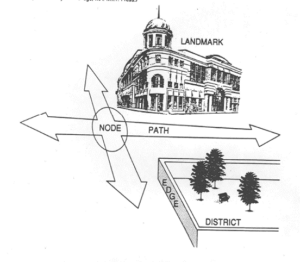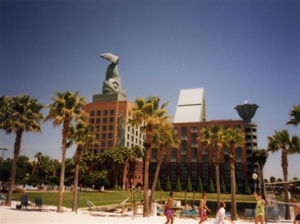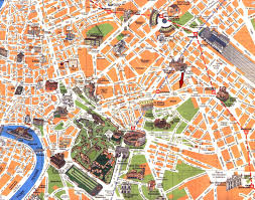Kevin Lynch, in his seminal book, The Image of the City (1960), reported that people could mentally map and understand their environments in very predictable ways. He found that mental maps (maps sketched by a average person from memory) had five common elements:
- paths, streets, sidewalks, trails, and other channels in which people travel;
- edges, perceived boundaries such as walls, buildings, and shorelines;
- districts, relatively large sections of the city distinguished by some identity or character;
- nodes, focal points or intersections;
- landmarks, readily identifiable objects which serve as external reference points.
Photo: www.groups.isschool.berkeley.edu
Lynch also coined the term “wayfinding” to be the psychological way we discover how to make our way through environments. Wayfinding can be promoted by characteristics of the environment including:
- Visual Access: being able to visually see your destination makes it easier to wayfind to that location.
- Degree of Differentiation: having unique qualities throughout the environment that distinguish one street or building from another makes it easier to wayfind through that environment.
- Legibility: being able to make sense of the environment and “read” the travel routes that you would go to get to your destination makes it easier to wayfind to that location.




